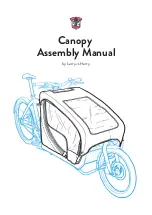
Right way
Wrong way
Motorists’
field of view
Motorists’
field of view
B I K E S E N S E — T H E W I S C O N S I N B I C Y C L E O P E R A T O R ’ S M A N U A L
If there is no shoulder or bike lane and
the curb lane is narrow, bicyclists may chose to use the
whole lane by riding in the center of it.
This can be safer than riding far to the right,
which may encourage motorists to squeeze by
where there isn’t sufficient space.
Motorists are required to pass with a minimum of three feet clear-
ance and must not return to the right of the roadway until they have
fully passed you. Bicyclists are also required to maintain three feet
clearance when passing a stopped or moving vehicle - including
parked cars.
When to take a lane
If there is no shoulder or bike lane, and the curb lane is too narrow
for a bicycle and motor vehicle to share the lane while maintaining 3
feet clearance, bicyclists may chose to take the whole lane by riding
farther left, towards the center of the lane. This can be safer than rid-
ing near the curb, which may encourage motorists to squeeze by
where there isn’t sufficient room. You should also consider taking the
lane when you are traveling at the same speed as other traffic. This
will keep you out of motorists’ blind spots and reduce conflicts with
right-turning traffic. Be prepared for the occasional frustrated driver
who is not familiar with the safe and legal operation of a bicycle.
user to be going the wrong way and won’t be looking for you. Riding
the wrong way makes it difficult to avoid other road users and obsta-
cles; it forces you out into traffic if you need to swerve. You can’t see
road signs or make proper turns. And finally, the “closing speed”
between you and another road user makes a collision more dangerous.
How far to the right should you ride?
The law requires bicyclists to ride as close as practicable to the right
hand curb or edge of the roadway, but that does not mean hugging
the curb or edge of the road. (See the Wisconsin Bicycle Laws in the
appendix for conditions where you are not required to ride as far to
the right as practicable.) You always need some extra space to
maneuver around road hazards without running the risk of hitting
the curb or going off the edge of the road. This allows you to move
away from traffic instead of directly into traffic in the event of an
emergency. As a general rule, ride at least 2–3 feet from the edge of
the pavement.
BikeSenseDaneCo-2004-04-27_Pantone543.qxd 4/27/2004 8:48 PM Page 18
















































